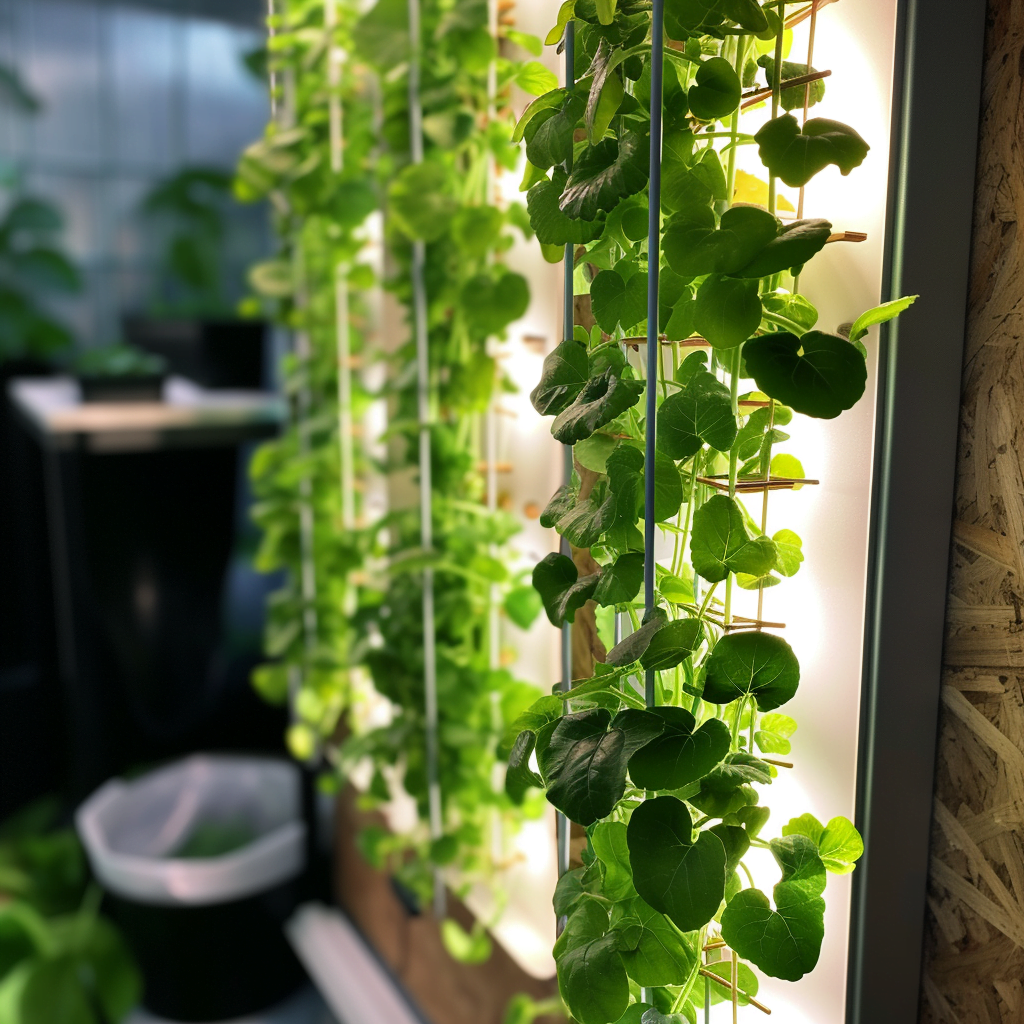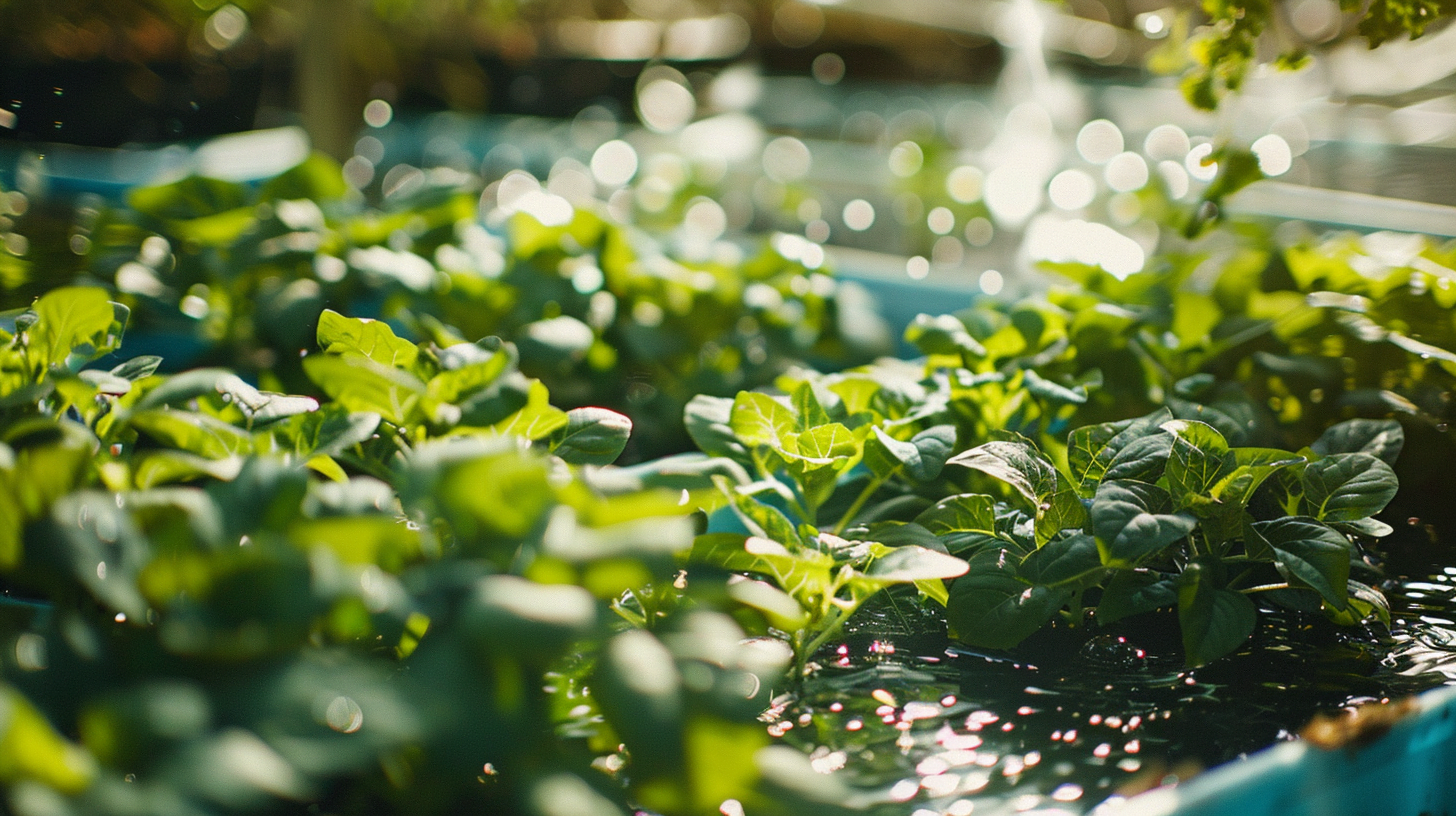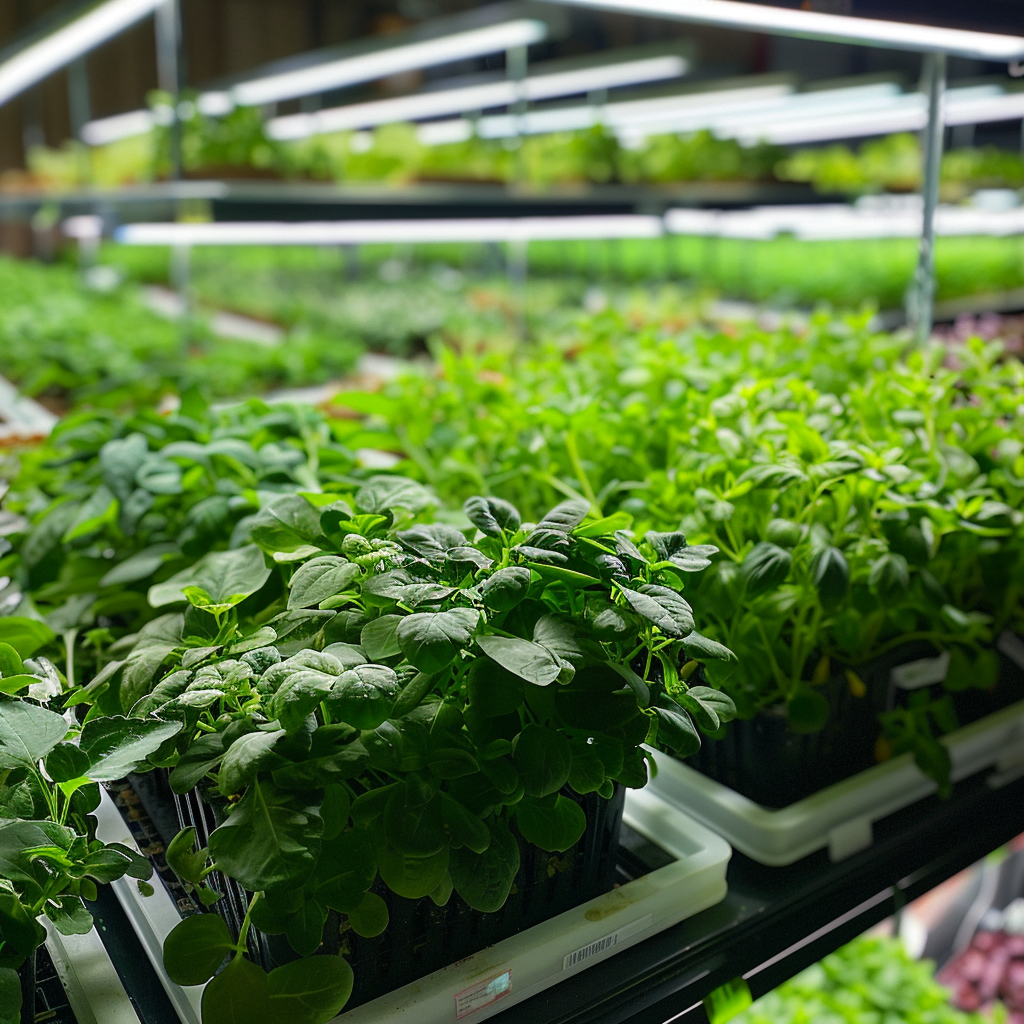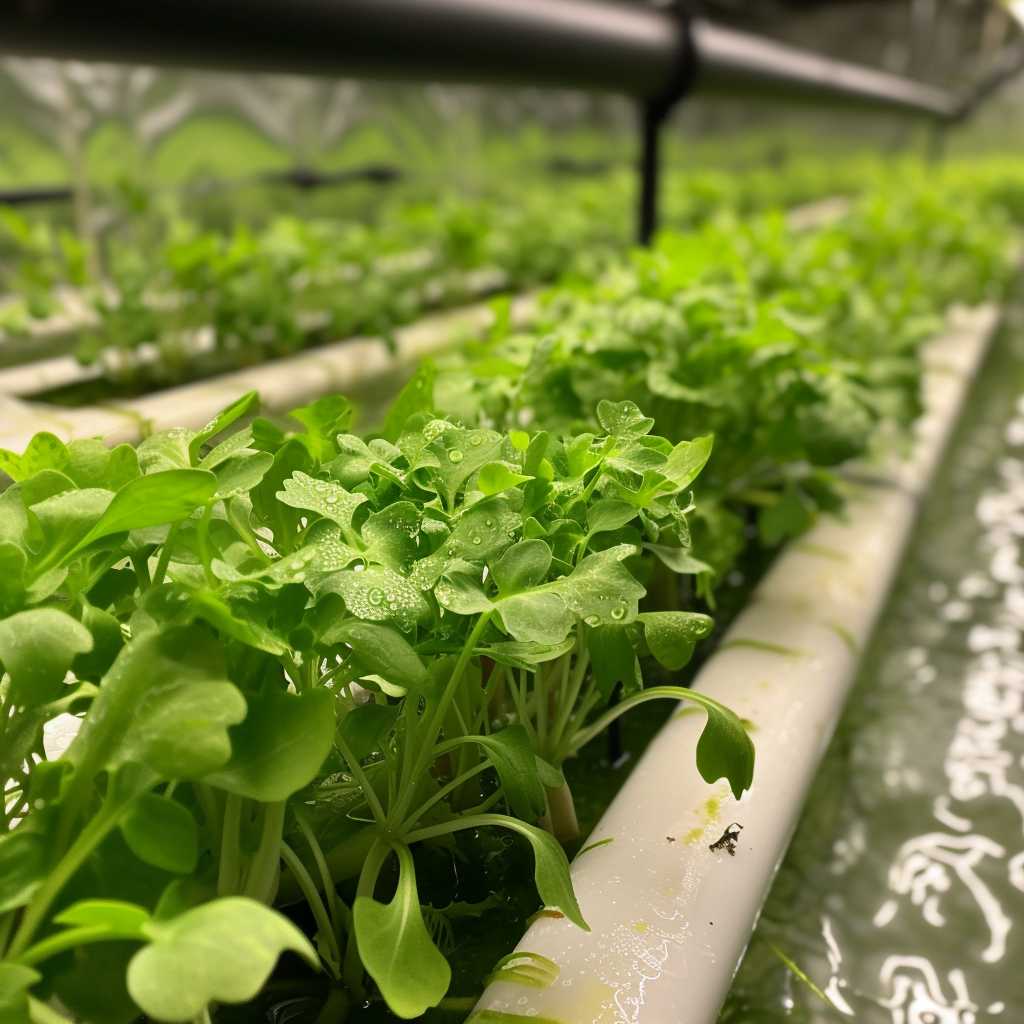Hydroponic gardening has been gaining popularity among home gardeners in recent years due to its ability to produce higher yields with less water and space compared to traditional soil gardening. By growing plants in nutrient-rich water rather than soil, hydroponics allows you to grow herbs, vegetables, fruits and flowers indoors or in greenhouses year-round.
But which hydroponic system is best for home use? Well, When starting a hydroponic system at home, the first big decision is choosing which type of hydroponic system to use. There are several approaches to hydroponic gardening, each with their own pros and cons. In this in-depth article, we will compare the most common home hydroponic systems to help you determine which is best for your needs and space.
Overview of Main Hydroponic Systems for Home Use
Here is a detailed overview of the most popular types of hydroponic systems used in residential gardening:
Wick System
The wick system is the simplest type of hydroponic system, making it a great choice for beginners. Plants sit in a growing medium like perlite, vermiculite or coconut coir. The growing medium is placed in a container that sits above a reservoir of nutrient-rich water solution. A wick or piece of rope connects the grow medium to the reservoir below. The wick draws the water solution up into the grow medium, where the plant’s roots can absorb it.
The wick system relies on capillary action rather than pumps to deliver water, so it requires no electricity. The only equipment needed is a suitable container, growing medium, wick, and nutrient solution. As such, wick systems have very low startup costs of around $50. They are compact and can fit on a windowsill or shelf. The drawback is that wick systems are limited in the size and quantity of plants they can support. They are best suited to growing a small amount of leafy greens and herbs for household use.
Deep Water Culture
Deep water culture (DWC) systems involve suspending plants above a reservoir of circulating nutrient solution so the plant roots are submerged in the water. An air pump connected to air stones aerates the solution to provide oxygen to the roots. The oxygenated, nutrient-rich solution stimulates rapid plant growth.
DWC systems can accommodate larger plants and provide higher yields than wick systems, but do require more space. At a minimum, you’ll need a 20 gallon reservoir, air pump, air stones, growing containers and medium for an investment of around $200. Light and space requirements are higher since plants are suspended above the reservoir. The reservoir also requires routine maintenance. However, DWC systems are still beginner-friendly and excellent for growing lettuce, greens, tomatoes, cucumbers, and herbs.
Ebb and Flow / Flood and Drain
In an ebb and flow or flood and drain system, plants are placed in an inert growing medium in trays above a reservoir. A pump periodically floods the grow trays with nutrient solution from the reservoir below. Once the tray is filled, the solution then drains back down into the reservoir. This cycling of wet and dry periods allows plant roots to receive water, nutrients and oxygen.
Ebb and flow systems require the most equipment of the basic home systems – a reservoir, submersible pump, tubing, timer, trays and drainage fittings. You can expect startup costs around $300. The reservoir, plumbing and tray setup does require more space as well. However, ebb and flow systems are versatile in the variety of plants they can accommodate and can produce higher yields. They work well for leafy greens, tomatoes, cucumbers, peppers, and herbs.
Drip System
In drip systems, nutrient solution is delivered directly to the base of each plant via drip lines, drippers and micro-sprayers. Pumps or gravity feed the solution from the reservoir through the drip lines. Excess solution not absorbed by plants is collected and recycled back into the reservoir.
Drip system equipment includes a reservoir, pump, tubing, irrigation lines/drippers, drainage collection system, and timer for an initial investment around $400. Drip systems take up more floor space than some other options. Since lines must run to each plant, drip systems work best for larger spaces and higher plant quantities. The advantages are highly customizable watering and the ability to support all types of plants including fruits and vegetables.
Nutrient Film Technique
In nutrient film technique (NFT), plants are placed in channels with no growing medium. A thin film of nutrient solution is continuously pumped into the channels, flowing over the bare roots before draining out. This exposes the roots to adequate water, nutrients and oxygen.
NFT systems require specialized channels, reservoirs, pumps and plumbing for a startup cost around $500. Since no grow medium is used, NFT systems provide high oxygen levels to the roots but require close monitoring of water flow. NFT works well for short rooted crops like lettuce, herbs and baby greens which require a constant supply of nutrients.
Aeroponics
Aeroponics is a high-tech method of growing plants with no growing medium. Plant roots are suspended mid-air and misted with a nutrient solution by nozzles at regular intervals. The roots are intermittently hydrated and aerated. Aeroponics facilitates extremely rapid growth but involves higher complexity.
Complete aeroponic systems with misters, pumps, timers and propagation chambers can cost $700 or more. While geared for commercial systems, smaller home aeroponic units are now available. Aeroponics excels at growing leafy greens and herbs quickly, taking only half the time of other methods. However, it requires diligent monitoring and maintenance.
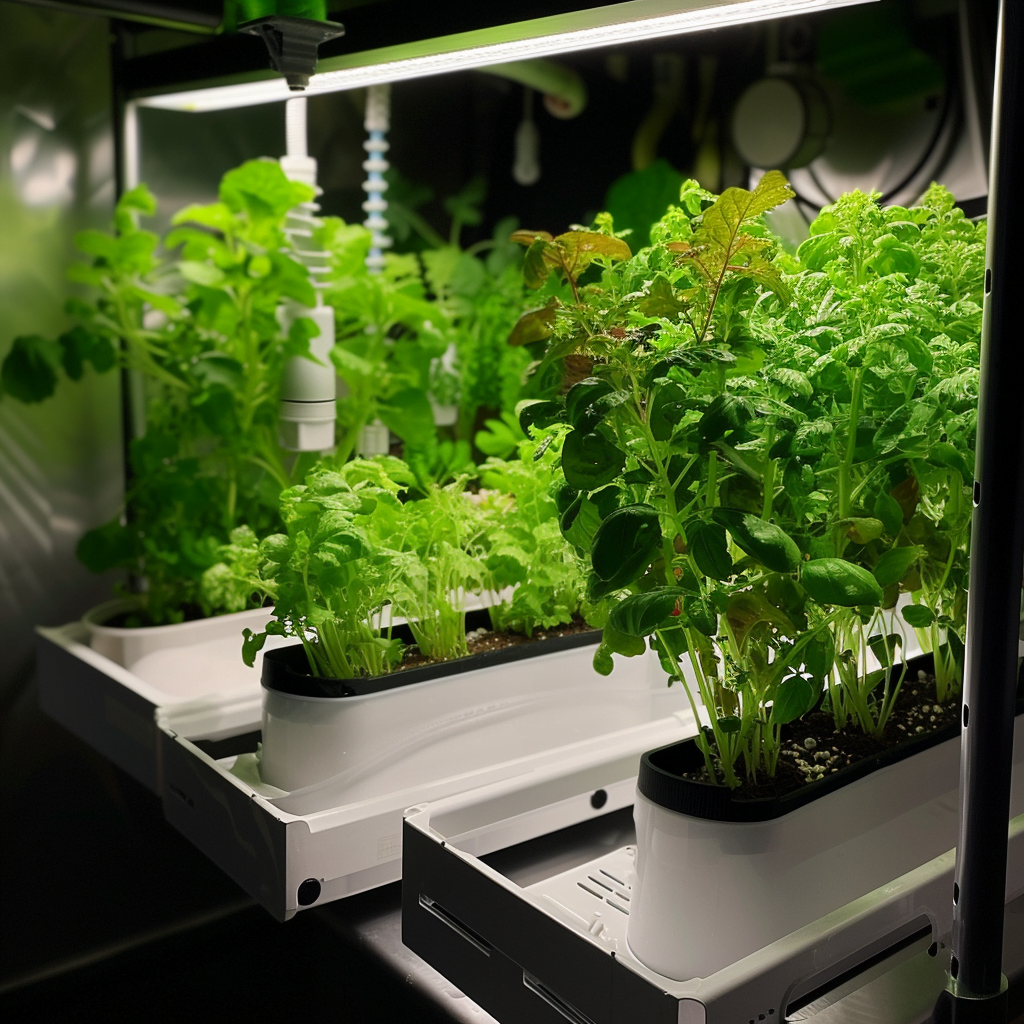
Factors to Consider When Choosing a Hydroponic System
When deciding which type of hydroponic system to implement in your home, there are a number of important factors to take into account:
Budget
One of the biggest considerations for any gardening project is determining what you can reasonably afford or want to spend. Hydroponic systems can range dramatically in cost from just $50 to many hundred dollars depending on their size and complexity. Wick and deep water culture systems have the lowest startup costs, needing just basic containers, growing medium and nutrient solution to function. More complex systems with pumps, reservoirs, tubing and control equipment have higher upfront costs but can accommodate larger gardens. Consider how much you are willing and able to spend when choosing your hydroponic approach.
Difficulty Level
Hydroponic systems also vary in their overall complexity and difficulty of operation. Passive wick and deep water culture systems need little daily maintenance once set up. Aeroponics, nutrient film technique and drip systems require more intensive monitoring and system tweaks to run properly. If you are brand new to hydroponics, choose an elementary system to start out. This will allow you to get the hang of managing factors like pH, nutrients, lighting and troubleshooting problems without tackling a complex build. More advanced hobby gardeners may opt for a system with more moving parts.
Space Available
Assess the space where you plan to locate your hydroponic system. Wick and deep water culture systems have small footprints, needing only about 5 square feet to produce modest yields. Larger reservoirs, tubing and pump setups used in ebb and flow, drip and NFT systems require 10 square feet or more of floor or counter space. Consider not just footprint but also vertical clearance – deep water culture needs headspace for plants suspended above the reservoir. Plan your system size based on the room you actually have available.
Time Commitment
All gardens require some degree of ongoing care, and hydroponic systems are no different. However, some systems demand more frequent maintenance than others. Wick systems only need occasional monitoring and nutrient solution refills. Constant flow systems like NFT and aeroponics require multiple checkups per week to confirm smooth operation. Realistically assess how much time per week you can spend tending to your hydroponic system. If your schedule is packed, pick a lower maintenance option.
Desired Yield
How much produce do you aim to harvest from your home hydroponic system? Wick and small deep water culture systems are suitable for generating a supplemental supply of herbs and leafy greens for 1-2 people. For higher yields needed to supply a household of 4+ or sell at a local market, larger ebb and flow, drip or aeroponic systems will have greater productivity. Consider your expected consumption or sales needs when choosing a system size. Larger systems come with higher startup costs but provide greater long term output.
Type of Plants
Nearly any vegetable, herb, flower or houseplant can be grown hydroponically. However, some systems lend themselves better to certain types of plants. Wick, deep water and ebb and flow systems work excellently for leafy greens and herbs. Ebb and flow also allows for tomatoes, cucumbers and peppers. Strawberries do well in ebb and flow or NFT systems. Vining plants like tomatoes, melons and cucumbers grow best vertically trained rather than spreading on flat planes. When selecting your system, factor in which crops you most want to grow.
Environmental Control
One advantage of indoor hydroponics is the ability to fully control temperature, humidity, light levels and CO2. Simple wick and deep water systems rely on ambient indoor conditions. More sophisticated hydroponic setups incorporate sensors and environmental controllers to optimize the growing environment. With a hydroponic greenhouse, you can add exhaust fans, heaters, shade cloths and swamp coolers to regulate conditions. If you live in an extreme climate, invest in a system that can provide environmental monitoring and control. This will maximize yields and allow you to grow exotic fruits and vegetables.
Growth Rate
Some types of hydroponic systems facilitate much faster plant growth than others. Wick and deep water systems still offer a growth boost over soil, but only produce moderately faster growth. Ebb and flow, drip and top-drip systems increase growth rate since the whole root zone receives constant nutrition and oxygen. NFT and aeroponic systems offer the highest velocity of growth, sometimes doubling the rate of soil growth. If your goal is lightning fast production of lettuce, greens and herbs, use an NFT or aeroponic setup. For most goals, an intermediate rate system like ebb and flow will be sufficient.
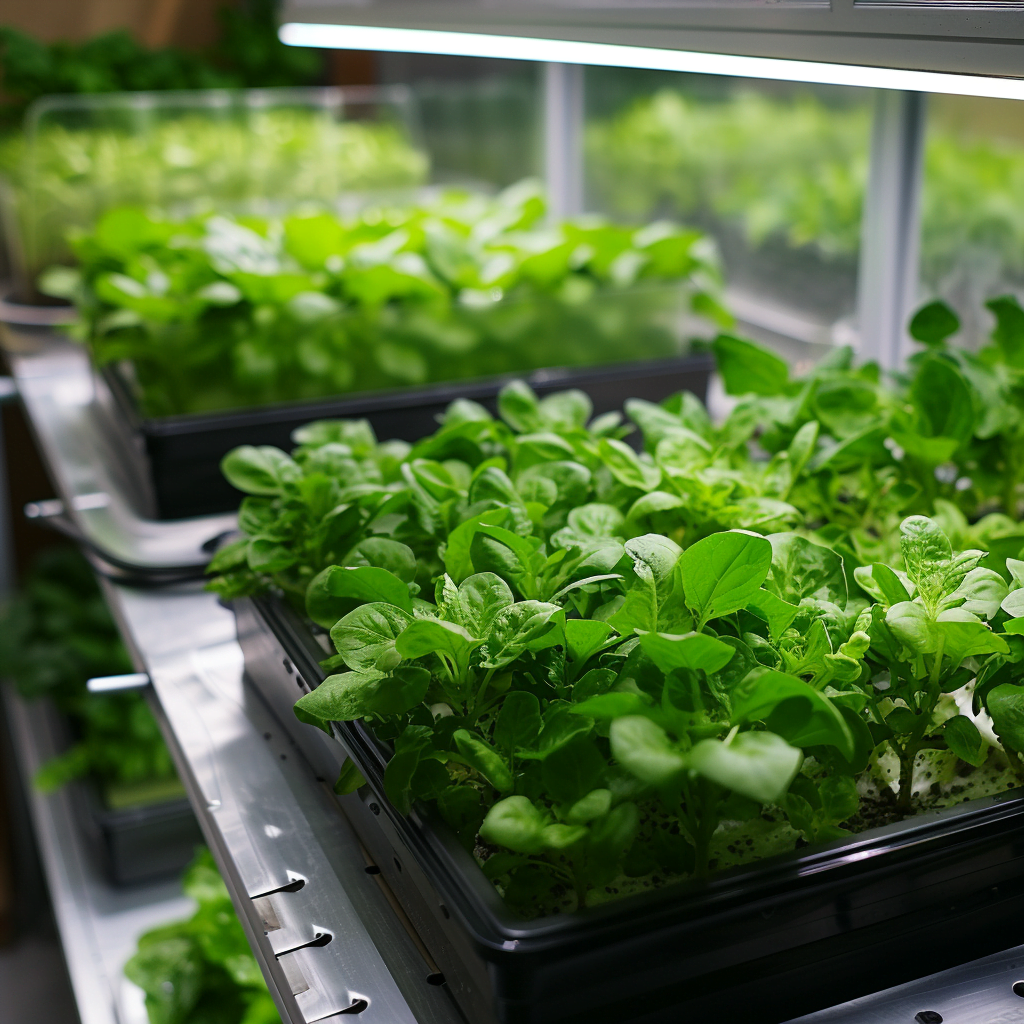
Best Hydroponic Systems for Small Spaces
Limited on space but still want a productive hydroponic garden? Choose one of these compact system options well-suited for small indoor areas:
Desktop Wick System
Add a simple wick system to your kitchen counter for fresh herbs and greens. Use a plastic storage bin or wooden window box as the housing. Install a grow light above for added sunlight. This mini wick garden can fit in less than 1 square foot of space.
Countertop Deep Water Culture
Mini 3-5 gallon deep water culture systems are compact enough for countertops while still having higher productivity than wick systems. Opt for a compact air pump and use LED grow lights.
Vertical Towers
Tower-style vertical hydroponic systems offer vertical rather than horizontal growing area. Available for most methods including wick, deep water and aeroponic options. Great for corners and other narrow spaces.
Wall-mounted Ebb and Flow
Mount a small ebb and flow system directly on a wall rather than taking up floor space. Use wall-mounted reservoirs and plumbing to minimize footprint area.
Best Hydroponic Systems for Beginners
Starting your first hydroponic project? Here are the best options for beginner gardeners:
Wick System
Extremely simple to operate and maintain – just monitor nutrient levels every 1-2 weeks. Allows beginners to grasp hydroponics without complex equipment.
Mini Deep Water Culture
Slightly more involved than wick systems but still beginner-friendly. 5 gallon bucket DWC kits available with all supplies. Gives experience with oxygenation, pH and nutrients.
Small Ebb and Flow
Affordable starter ebb and flow kits available. Step-by-step instructions provide guidance for beginners. Gradually increase system size as experience grows.
Lettuce Raft
Floating raft systems that hold lettuce heads are easy starters’ hydroponic systems. Focus on monitoring just one simple setup.
Tomato Plant Kits
Pre-assembled tomato plant kits available for wick, ebb and flow, or deep water culture systems. Allow beginners to get started with minimal effort.
Best Hydroponic Systems for High Yield
To maximize production in your home hydroponic garden, use one of these high yield setups:
Multi-shelf Ebb and Flow
Optimize vertical space by installing 3-5 stacked ebb and flow shelves with separate reservoirs and pumps. Allows you to grow a high density of plants in a small footprint.
Commercial Aeroponic System
Aeroponic systems produce up to 30% faster growth than other methods. While pricy, commercial models like Aerofarms can generate huge yields.
Homemade NFT System
For intermediate DIYers, homemade PVC NFT systems can be created on the cheap. Produce pounds of greens and herbs in these high velocity systems.
Multi-tier Vertical Towers
Premade vertical towers allow you to stack 5+ levels of plants above each other, multiplying your yield density. Combine with LED grow lights for indoor use.
Large DIY Ebb and Flow
Ambitious DIYers can construct large custom ebb and flow systems for a fraction of commercial prices. Use multiple chambers for staggered harvests.
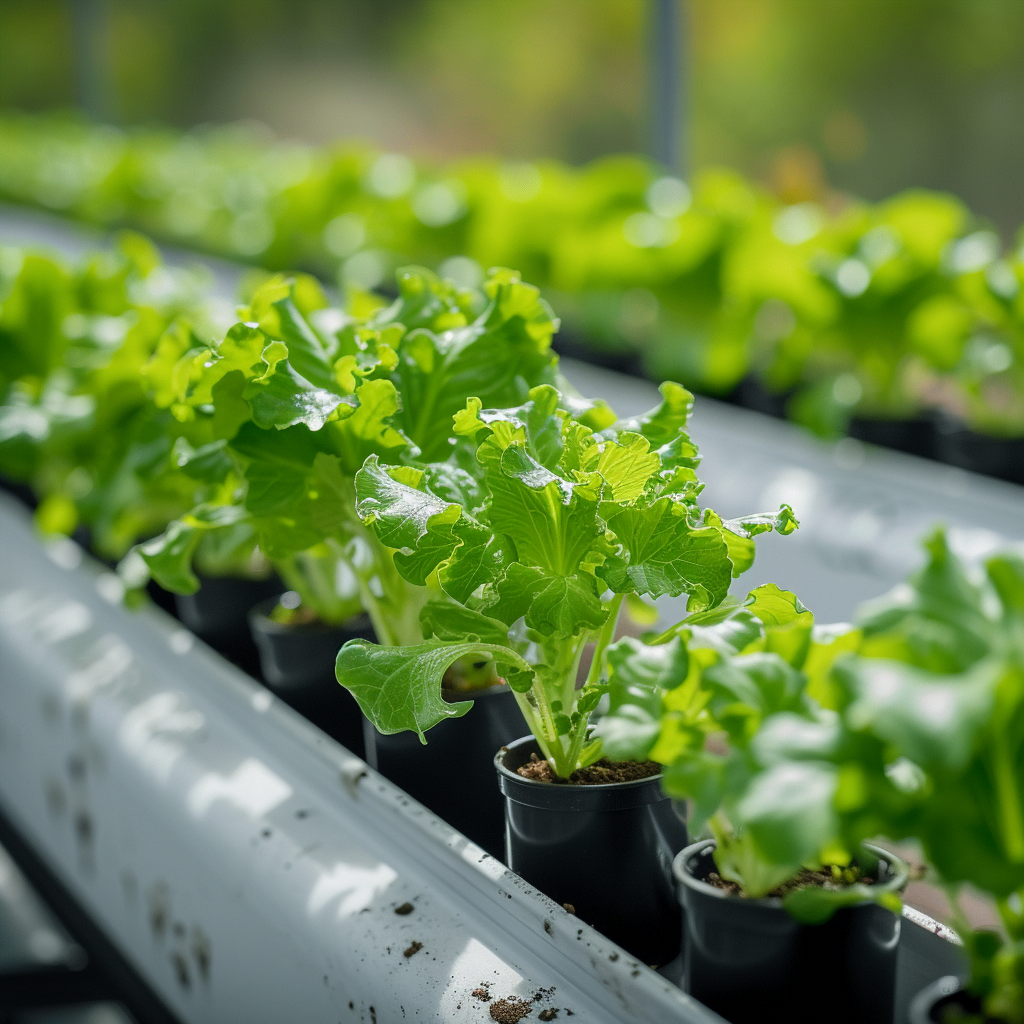
Recommended Systems by Plant Type
Leafy Greens and Herbs
For salad greens, kale, arugula, spinach, chard, basil, cilantro, parsley and more, you can’t go wrong with any basic hydroponic method. Wick, deep water, ebb and flow, top drip, raft, and NFT systems all work excellently for these quick-growing crops. Match the system size to your desired production amount.
Tomatoes
Suitable hydroponic systems for homegrown tomatoes include top drip, deep water culture, and ebb and flow setups. For compact plants, go with a topsy turvy style hanging tomato planter. For vining tomatoes, use vertical strings in deep water or trailing along horizontal pipes in an ebb and flow system.
Cucumbers
Prolific cucumber yields can be grown using ebb and flow or top drip hydroponic methods. Grow vertically using mesh trellises or strings to support vining growth. Provide 16+ hours of daily light during fruiting season for best results with cukes.
Strawberries
Keep strawberry plants productively fruiting using an ebb and flow or NFT system. Place plants in nets or growing slabs angled downward to allow the berries to hang suspended. Allow runners to form new daughter plants.
Peppers
Perfect for indoor gardening, bell and chili pepper plants thrive hydroponically. Deep water culture, ebb and flow, top drip or even aeroponic systems can all generate bountiful pepper harvests under lights or in a greenhouse.
Squash
Summer squash varieties grow well suspended above deep water culture reservoirs. Or train vines vertically along support strings in ebb and flow systems. Provide lots of light and nutrients in the reservoir.
Fruiting Trees
Miniature fruit trees like dwarf citrus, papaya, apple or olive trees can be grown in large hydroponic reservoirs using top drip or deep water culture systems. With supplemental lighting, fruit year round indoors.
Conclusion
When selecting the ideal hydroponic system for your home gardening needs, carefully consider key factors like your budget, skills, plant choices, space constraints, growth goals and maintenance commitment. Simple wick and deep water systems are great for starting out with herbs and greens on the windowsill. For more serious home growers, an ebb and flow or top drip system can provide expanded yield capabilities for tomatoes, peppers, cucumbers and more. Vertical systems maximize productivity in very small spaces. Aeroponic and NFT systems deliver the fastest growth for leafy greens but require more effort. With the wide range of systems available today, hydroponic gardening can fit nearly any living space, budget or gardening experience level.
